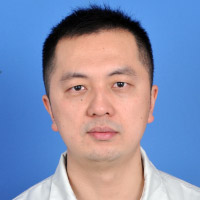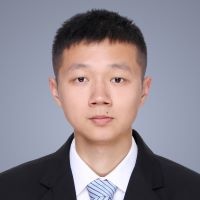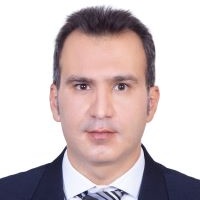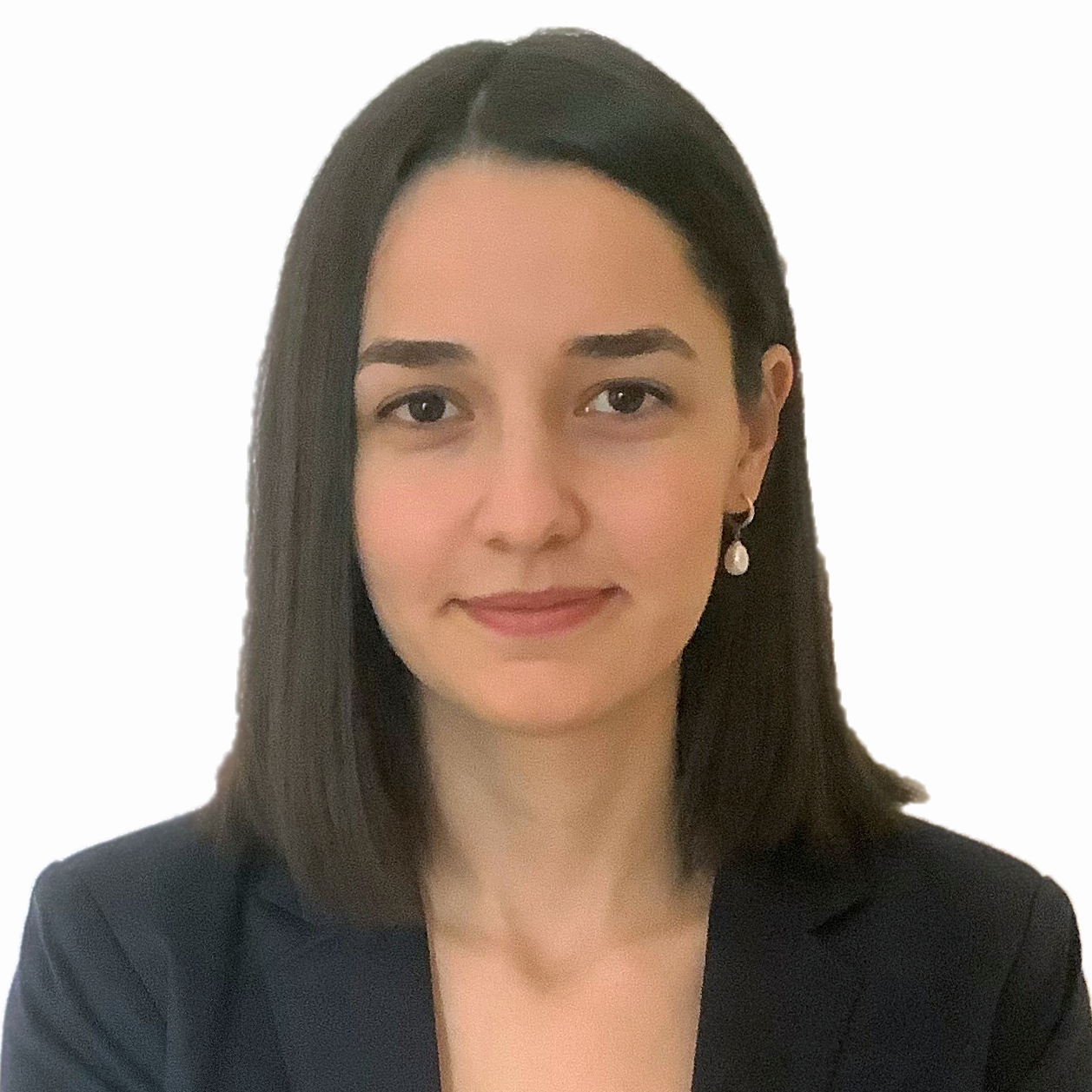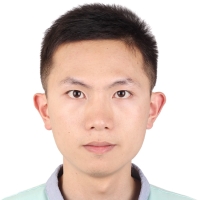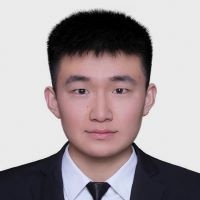Offshore geomechanics
Research
We aim to provide better understanding and reliable solutions in offshore geotechnical engineering, including seabed sediment characterisation, offshore structure-seabed interaction, and georisk mitigation towards safe and sustainable engineering in the Ocean.
Our research focuses on developing fundamental and practical solutions in offshore geotechnical engineering using analytical, numerical, probabilistic and physical modelling methods. Some of our research interests include:
- Advanced soil constitutive models
- Advanced performance simulation of offshore foundations and geo-structural systems
- Emerging AI technology in offshore geotechnics
- Georisk and reliability analysis
- Large deformation numerical method
- Mobile jack-up or drilling rig footing solutions
- Offshore geohazards
- Offshore mooring and anchoring system optimisation
- Offshore pipeline integrity and stability analysis
- Offshore site investigation tool development
- Strain rate effects in soil studies
- Suction caissons and skirted foundation applications
Our research in offshore geotechnical engineering are internationally recognised and have received several international best paper awards, including the 2016 David Hislop Award, 2016 Telford Premium Prize and 2014 Manby Prize from the Institution of Civil Engineers (ICE), UK. Some notable outcomes include joint international patents with industry partners, contribution to industry guideline and International Standards. Our group is closely collaborating with the Ocean Engineering group and the Porous Media Research Laboratory. The group also collaborates widely with academic and industry partners worldwide, and have attracted significant competitive national and international research funding.
Active projects
Engineering screw piles to secure offshore wind energy turbines (2022-2025)
Smart site investigation for offshore energy installations in sand (2022-2025)
A geotechnical centrifuge to underpin Australia's energy and construction (2022-2024)
Solutions for rapid penetration into sand for offshore energy installations (2019–2021)
Anchoring the next generation of offshore floating infrastructure (2021–2025)
Crusty Seabeds: From (Bio-)Genesis To Reliable Offshore Design (2020–2023)
Lifting Objects Off The Seabed (2019–2021)
Design Guideline For Suction Caissons Supporting Offshore Wind Turbines (2018–2021)
Improving The Security Of Anchoring Systems Under Extreme Cyclones (2018–2021)
Cryogenic Pipelines To Replace Trestle For Liquefied Gas Transfer Terminals (2018–2020)
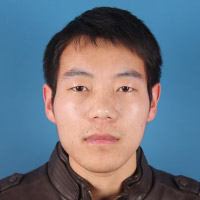
Wenlong Liu
Collaborations
Academic collaborations
- Dundee University
- Hamburg University of Technology (TUHH)
- Kongju National University
- KU Leuven
- Monash University
- Nanyang Technological University
- National University of Singapore
- Newcastle University
- Ocean University of China
- Queen’s University Belfast
- Seoul National University
- Shanghai Jiao Tong University
- Tianjin University
- Technical University of Denmark
- Texas A&M University
- University College Cork
- University of Bristol
- University of Cambridge
- University of Kassel
- University of Massachusetts, Dartmouth
- University of Oxford
- University of Southampton
- University of Sydney
- University of Toronto
- University of Western Australia
- University of Western Sydney
- Virginia Tech
Industry collaborations
- Arup
- Daewoo Shipbuilding & Marine Engineering (DSME)
- Fugro Australia Marine Pty Ltd
- Keppel Offshore and Marine
- Lloyd’s Register Foundation
- Norwegian Geotechnical Institute (NGI)
- Woodside Energy
Honorary Fellows
|
|
|
Dr Noel BoylanDirector, NGI Perth | Dr Omid KohanPrinciple Engineer, Wood Group | Dr Qijing YangSenior Technical Director, Arcadis Australia Pacific |
Please visit the Faculty of Engineering and Information Technology - Research - Graduate Research - Research Opportunities to view the latest Graduate Research opportunities
Journal papers
-
- Maitra, S., Tian, Y., & Cassidy, M. (2024). The ultimate state of anchoring systems from integrated analysis of plate anchor and mooring line. Journal of Geotechnical and Geoenvironmental Engineering (ASCE). Accepted on 2 May 2024.
- Rong, J., Nazem, M., Chow, S.H., Zhou, A., & Moridpour, S. (2024). Design and application of dynamic seabed penetrators in offshore geotechnical engineering: A review. Ocean Engineering, 293, 116599. doi: 10.1016/j.oceaneng.2023.116599.
- Li, S., Qi, Y., Zhou, M., Zhang, X., Tian, Y., Li, J., & Zuo, H. (2024). Response of installed suction caisson induced by rectangular footings penetration in non-homogeneous clay. International Journal of Geomechanics (ASCE). Accepted on 6 March 2024.
- Wang, R., Yue, Y., Feng, X., Zhang, C., Chen, H., Wang, L., & Tian, Y. (2024). Bearing capacity of perforated surface foundations on sand. Ships and Offshore Structures. Accepted on 13 February 2024.
- Cheng, H., Niu, F., Zhou, M., Zhang, X., Tian, Y., & Li, J. (2024). Bearing capacity of hybrid skirted foundations in silty sand-over-clay under combined V-H-M loading. International Journal of Geomechanics (ASCE). Accepted on 1 February 2024.
- Chen, H., Shen, Z., Wang, L., & Tian, Y. (2024). Probabilistic undrained bearing capacity of shallow foundations under combined loading in three-dimensional spatially variable soils. Ocean Engineering, 294, 116749. doi: 10.1016/j.oceaneng.2024.116749.
- Shu, X., Wang, Z., Peng, Y., Zhou, Z., & Tian, Y. (2024). A novel elasto-viscoplastic constitutive model for predicting the embankment settlement on soft structured clay. Computers and Geotechnics, 167, 106093. doi: 10.1016/j.compgeo.2024.106093.
- Maitra, S., Tian, Y., & Cassidy, M. (2024). An efficient approach to tackle the challenges of LDFE modelling of plate anchor-chain system during installation process. Computers and Geotechnics, 166, 105974. doi: 10.1016/j.compgeo.2023.105974.
- Peng, M., Tian, Y., & Gaudin, C. (2024). Investigations into the uplift of skirted foundations on clay at varying rates. Journal of Geotechnical and Geoenvironmental Engineering (ASCE), 150(2), 04023137. doi: 10.1061/JGGEFK/GTENG-11502.
- Yang, Y., Tian, Y., Yang, R., & Wang, L. (2024). Assessment of shear band evolution using discrete element modelling. Engineering Computations. doi: 10.1108/EC-07-2023-0327.
-
- Zhao, H., Wang, L., Sun L., Tian, Y., Reul, O., & Chen, Q. (2023). Pile Running in Layered Soils. China Ocean Eng. 37(5), 829–841. doi: 10.1007/s13344-023-0069-4.
- Wang, R., Wang, L., Tian, Y., & Zhang, C. (2023). Numerical investigation of the keying process of a new type of expandable plate anchor. Applied Ocean Research, 140, 103744. doi: 10.1016/j.apor.2023.103744.
- Wang, Y., Zou, X., Zhou, M., Zhang, X., & Tian, Y. (2023). Numerical investigation of the penetration of torpedo anchors in sand-overlying-nonhomogeneous clay deposit. Ocean Engineering, 287, 115684. doi: 10.1016/j.oceaneng.2023.115684.
- Chen, H., Wang, L., Tian, Y., Zhang, C., Shen, Z., & Liu, M. (2023). The failure envelopes of single-plate rigid helical anchors for floating offshore wind turbine. China Ocean Engineering, 37(6), 1000‐1010. doi: 10.1007/s13344-023-0083-6.
- Zhou, S., Zhou, M., Tian, Y., & Zhang, X. (2023). Effects of strain rate and strain softening on the installation of helical pile in soft clay. Ocean Engineering, 285, 115370. doi: 10.1016/j.oceaneng.2023.115370.
- Wang, L., Zhao, X., Zhang, P., Ding, H., Guo, Y., Tian, Y., & Liu, M. (2023). The study of the failure envelopes of hollow shaft single-plate helical piles in clay. Journal of Marine Science and Engineering, 11(7), 1323. doi: 10.3390/jmse11071323.
- Zhou, M., Lu, W., Guo, Z., Xue, L., Zhang, X., & Tian, Y. (2023). Interpretation of shear strength of cone penetrating in double layered clays considering the scale effect in centrifuge testing. Applied Ocean Research, 138, 103647. doi: 10.1016/j.apor.2023.103647.
- Zhou, M., Peng, Xi, Qi, Y., Zhang, X., & Tian, Y. (2023). Influence of spudcan penetration on adjacent skirted foundation in uniform clay. Journal of Geotechnical and Geoenvironmental Engineering (ASCE), 149(6), 04023030. doi: 10.1061/JGGEFK.GTENG-11074.
- Shen, Z., Pan, Q., Chian, S., Gourvenec, S., & Tian, Y. (2023). Probabilistic failure envelopes of strip foundations on soils with non-stationary characteristics of undrained shear strength. Géotechnique, 73(8), 716-735. doi: 10.1680/jgeot.21.00169.
- Wang, L., Chen, H., & Tian, Y. (2023). The influence of the shaft on the uplift capacity of single-plate helical pile in clay. Journal of Marine Science and Engineering, 11, 955. doi: 10.3390/jmse11050955.
- Wang, Y., Zou, X., Zhou, M., Zhang, X., & Tian, Y. (2023). Dynamic installation of torpedo anchors in slightly overconsolidated clay-overlaying-sand deposit. Computers and Geotechnics, 158, 105399. doi: 10.1016/j.compgeo.2023.105399.
- Wang, X., Zhou, M., & Tian, Y. (2023). The behaviour of embankment with non-uniform geotextiles reinforcement on soft soil. International Journal of Offshore and Polar Engineering, 33(03), 323-332. doi: 10.17736/ijope.2023.cl23.
- Chen, H., Shen, Z., Tian, Y., & Wang, L. (2023). Probabilistic analysis of skirted foundations under combined loading in soils modelled by non-stationary random fields. Ocean Engineering, 272, 113791. doi: 10.1016/j.oceaneng.2023.113791.
- Shen, Z., Tian, Y., Chian, S., & Yan, Z. (2023). Improving the estimation of soil spatial variability by considering transformation uncertainty based on LDRFE analysis. Computers and Geotechnics, 156, 105299. doi: 10.1016/j.compgeo.2023.105299.
- Tian, Y., Zhou, T., Cassidy, M.J., & Wang, L. (2023). Envelopes for the soil-resistance capacity of a shallowly embedded pipeline in clay under three-dimensional combined loadings. Applied Ocean Research, 132:103482. doi: 10.1016/j.apor.2023.103482 .
- Zhou, M., Yang, N., Tian, Y., & Zhang, X. (2023). Inclined pullout capacity of suction anchors in clay over silty sand. Journal of Geotechnical and Geoenvironmental Engineering (ASCE). 149(6), 04023030. doi: 10.1061/JGGEFK.GTENG-11074.
- Chen, H., Shen, Z., Wang, L., Tian, Y., & Chu, X. (2023). Undrained capacity of skirted circular foundations under fully three-dimensional loading. Computers and Geotechnics, 156, 105261. doi: 10.1016/j.compgeo.2023.105261.
- Chen, H., Wang, L., Tian, Y., & Qi, C. (2023). Probabilistic bearing capacities of strip foundation on two-layered clay. Ocean Engineering, 269, 113572. doi: 10.1016/j.oceaneng.2022.113572.
- Zhang, Q., Zhu, W., Ye, G., Tian, Y., & Yan, Y. (2023). Centrifuge tests and numerical simulations on vertical bearing capacity of mat foundation on marine clay seabed. Applied Ocean Research, 135, 103534. doi: 10.1016/j.apor.2023.103534.
- Chow, S.H., O’Loughlin, C.D., Goh, C.L.V., MciLduff, R., White, D.J., & Chow, F.C. (2023). A comparative field study of free-fall cone and sphere penetrometers in soft sediment. Ocean Engineering, 280, 114094. doi: 10.1016/j.oceaneng.2023.114094.
- Roy, A., & Chow, S.H. (2023). Numerical and analytical investigation on inclined plate anchors in sand. Computers and Geotechnics, 154, 105132. doi: 10.1016/j.compgeo.2022.105132.
- Orakci, O., Huvaj, N., François, S., & Anoyatis, G. (2023). Probability of unsatisfactory performance of monopile foundations for offshore wind turbines considering variations in seabed properties. Ocean Engineering, 277, 114335. doi: 10.1016/j.oceaneng.2023.114335.
- Anoyatis G., François S., Orakci O., & Tsikas A. (2023). Soil-pile interaction in vertical vibration in inhomogeneous soils. Earthquake Engineering & Structural Dynamics, 1-20. doi: 10.1002/eqe.3968.
- Chen, X., Zhang, C., Tian, Y., Wang, L., & El Borgi, S. (2023). The criterion of lateral 1 buckling and axial walking for HPHT offshore pipelines. Journal of Pipeline Systems Engineering and Practice ASCE, 14(1), 04022069. doi: 10.1061/JPSEA2.PSENG-1332.
-
- Lehane, B.M., Zania, V., Chow, S.H., & Jensen, M. (2022). Interpretation of centrifuge CPT data in normally consolidated silica and carbonate sands, Géotechnique. doi: 10.1680/jgeot.21.00177.
- Kim, Y., Chow, S.H., Hossain, M.S., Zhao, J., & Rohan, S. (2022). Fish anchor diving behaviour: confirmation through field tests in the Swan River, Géotechnique Letters, 12(1), 60-67. doi: 10.1680/jgele.21.00007.
- Roy, A., Chow, S.H., Randolph, M.F., & O’Loughlin, C.D. (2022). Consolidation effects on uplift capacity of shallow horizontal plate anchors in dilating sand. Géotechnique, 72 (11), 957-973. doi: 10.1680/jgeot.20.P.117.
- Maitra, S., Tian, Y., & Cassidy, M. (2022). Investigation of the installation process of drag-in plate anchors from LDFE modelling. Géotechnique. doi: 10.1680/jgeot.21.00402.
- Wang, L., Wu, M., Chen, H., Hao, D., Tian, Y., & Qi, C. (2022). Efficient machine learning models for the uplift behavior of helical anchor in dense sand for wind energy harvesting. Applied Sciences, 12, 10397. doi: 10.3390/app122010397.
- Xia, H., Zhou, M., Niu, F., Zhang, X., & Tian, Y. (2022).Combined bearing capacity of bucket foundations in soft-over-stiff clay. Applied Ocean Research, 126, 103299. doi: 10.1016/j.apor.2022.103299.
- Wang, J., Tian, Y., Liu, W., & Wang, L. (2022). Capacity envelope of plate anchors under six degree-of-freedom loads in clay. Applied Ocean Research, 126, 103267. doi: 10.1016/j.apor.2022.103267.
- Chen, H., Shen, Z., Wang, L., Qi, C., & Tian, Y. (2022). Prediction of undrained failure envelopes of skirted circular foundations using gradient boosting machine algorithm. Ocean Engineering, 258, 111767. doi: 10.1016/j.oceaneng.2022.111767.
- Sun, L., Shi, J., Zhang, Y., Feng, X., Tian, Y., & Wang, R. (2022). Analytical method for predicting pile running during driving, Applied Ocean Research, 125, 103234 doi: 10.1016/j.apor.2022.103234.
- Huang, T., Tian, Y., Dai, G., & Jiao, A. (2022). Experimental study of wave-induced response of piles in seabed with various permeability. Applied Sciences, 12, 2698. doi: 10.3390/app12052698.
- Xiao, Z., Wang, Y., Liu, Y., Tian, Y., Wang, R., Tao, R., & Wei, X. (2022). Formulas for uniaxial capacities of tetrapod bucket foundations considering group effects in undrained clay. Applied Sciences, 12(11), 5353. doi: 10.3390/app12115353.
- Yang, Y., Tian, Y., Zhang, C., Wang, L., Zhou, M., & He, J. (2022). An approach to predict soil particle breakage and gradation evolution for carbonate sands. Powder Technology. 404, 117404. doi: 10.1016/j.powtec.2022.117404.
- Hossain, M.S., Kim, Y.H., Cassidy, M.J., Tian, Y., An, H., Kim, Y.T., & Baeg, K.T. (2022). Embedment depth and uplift capacity of a cryogenic pipeline dynamically. Ocean Engineering, 251, 111093. doi: 10.1016/j.oceaneng.2022.111093.
- Yang, N., Zhou, M., Zhang, X., & Tian, Y. (2022). Bearing capacities of buried bucket foundations in marine tidal flat subjected to combined loading. International Journal of Geomechanics, 22(8), 04022110. doi: 10.1061/(ASCE)GM.1943-5622.0002445.
- Zhou, S., Zhou, M., Tian, Y., & Zhang, X. (2022). Numerical investigation of caisson with pad-eye stiffener installation into nonhomogeneous clay. Applied Ocean Research, 121, 103077. doi: 10.1016/j.apor.2022.103077.
- Tian, Y., Ren, J., Zhou, T., Peng, M., & Cassidy, M. (2022). Coupled hydro-mechanical interfaces to enable uplift modelling in offshore engineering. Ocean Engineering, 245, 110570. doi: 10.1016/j.oceaneng.2022.110570.
- Peng, M., Tian, Y., Gaudin, C., Zhang, L., & Sheng, D. (2022). Application of a coupled hydro-mechanical interface model in simulating uplifting problems. International Journal for Numerical and Analytical Methods in Geomechanics, 46(17), 3256-3280. doi: 10.1002/nag.3450.
- Tian, Y., Wu, W., Cassidy, M.J., & Randolph, M.F. (2022). A complete analytical solution for axial pipeline walking considering seabed resistance as rigid plastic behaviour. Géotechnique, 72(9), 810-824. doi: 10.1680/jgeot.20.P.135.
- Lin, M., Liu, X., Yin, H, Lin, W., Tian, Y., Gao, J., & Liu, M. (2022). Semi-rigid system for immersed tunnel. Structures and Buildings, 175(2), 190-200. doi: 10.1680/jstbu.21.00010.
-
- Cai, Y., M.F. Bransby, Gaudin, C., & Tian, Y. (2021). Accounting for soil spatial variability in plate anchor design. Journal of Geotechnical and Geoenvironmental Engineering (ASCE), 148(2), 04021178. doi: 10.1061/(ASCE)GT.1943-5606.0002720.
- Fang, Z., Cheng, L., Zang, Z., Shen C., Tian, Y., & Cheng, N. (2021). Numerical investigations on hydrodynamic performance of an open comb-type breakwater under medium water levels. China Ocean Engineering, 35(6), 866-877. doi: 10.1007/s13344-021-0076-2.
- Yang, Y., Zhang, C., Wang, R., Jiang, M., & Tian, Y. (2021). The crushing characteristics of transitional soils mixed with silicon and carbonate sands. Engineering Geology, 292, 106246. doi: 10.1016/j.enggeo.2021.106246.
- Tian, Y., O’Loughlin, C., & Cassidy, M. (2021). Optimisation of the padeye location for dynamically embedded plate anchors. Computers and Geotechnics, 138:104335. doi: 10.1016/j.compgeo.2021.104335.
- Liu, W., Tian, Y., & Cassidy, M. (2021). An Interface to Numerically Model Undrained Soil-Structure Interactions. Computers and Geotechnics, 138:104327. doi: 10.1016/j.compgeo.2021.104327.
- Yang, N., Zhou, M., Tian, Y., & Zhang, X. (2021). Evaluation of capacities of bucket foundations in soft-stiff-soft clays under combined loading. Applied Ocean Research, 115 102843. doi: 10.1016/j.apor.2021.102843.
- Zhang, Q., Fang, T., Ye, G., Liu, G., Wang, R., & Tian, Y. (2021). Effect of sitting time on the breakout force of mat foundation on soft marine clay seabed. Ocean Engineering, 234, 108770 doi: 10.1016/j.oceaneng.2021.108770.
- Zang, Z., Chen, Y., Zhang, J., Tian, Y., & M. Dolores Esteban. (2021). Experimental study on local scour and onset of VIV of a pipeline on a silty seabed under steady currents. Applied Ocean Research, 109:102560. doi: 10.1016/j.apor.2021.102560.
- Tian, Y., Chai, W., El Borgi, S., Zhang, C., Sun, L., Xiao, Z., & Fu, D. (2021). Assessment of submarine pipeline damages subjected to falling object impact considering the effect of seabed. Marine Structures, 78, 102963. doi: 10.1016/j.marstruc.2021.102963.
- Zhou, S., Zhou, M., Zhang, X., & Tian, Y. (2021). Installation of caisson in non-uniform clay interbedded with a sand layer. Computers and Geotechnics, 140, 104439. doi: 10.1016/j.compgeo.2021.104439.
- Peccin da Silva, A., Diambra, A., Karamitros, D. & Chow, S.H. (2021). A Cyclic Macro-Element Framework for Consolidation-Dependent Three-Dimensional Capacity of Plate Anchors. Journal of Marine Science and Engineering, 9(2), 199. doi: 10.3390/jmse9020199.
- Peccin da Silva, A., Diambra, A., Karamitros, D., & Chow, S.H. (2021). A non-associative macro-element model for vertical plate anchors in clay. Canadian Geotechnical Journal, 58(11), 1703-1715. doi: 10.1139/cgj-2020-0314.
- Umar M., Chiaro G., Kiyota T., & Ullah N. (2021). Deformation and cyclic resistance of sand in large-strain undrained torsional shear tests with initial static shear stress. Soil and Foundations, 61, 765-781. doi: 10.1016/j.sandf.2021.02.008.
- Ullah N., Umar M., Kiyota T., & Katagiri T. (2021). Effect Of Undrained Cyclic Strain History On Strength Characteristics Of Clean Sand In Torsional Shear Tests. Engineering for Resilient Society Research Group Bulletin, Tokyo, Japan. ERS No. 54.
-
- Li, A., Zhou, M., Tian, Y., & Yang, S. (2020). Effect of rockfill berm on the stability of large geotextile mat dikes on soft clay. Computers and Geotechnics, 128:103839. doi: 10.1016/j.compgeo.2020.103839.
- Xiao, Z., Lu, Y., Wang, Y., Tian, Y., Zhao, Y., Fu, D., & Zhang D. (2020). Investigation into the influence of caisson installation process on its capacities in clay. Applied Ocean Research, 104, 102370. doi: 10.1016/j.apor.2020.102370.
- Zhao, L., Wang, D., & Tian, Y. (2020). Finite element modelling for as-laid embedment of pipeline in clayey sediments. Ocean Engineering, 217, 107963. doi: 10.1016/j.oceaneng.2020.107963.
- Castelo, A., White, D.J., & Tian, Y. (2021). Solutions for downslope pipeline walking on peaky tri-linear soils. Journal of Offshore Mechanics and Arctic Engineering, 143(2), 022101. doi: 10.1115/1.4048331.
- Li, J., Luo, W., Tian, Y., Wang, Y., & Cassidy, M.J. (2020). Modelling of large deformation problem considering spatially variable soils in offshore engineering. Marine Georesources and Geotechnology, 39(8), 906-918. doi: 10.1080/1064119X.2020.1779444.
- Wang, Q., Zhou, X., Zhou, M., & Tian, Y. (2020). Investigation on the behavior of stiffened caisson installation in uniform clay from large deformation modeling. International Journal of Geomechanics, ASCE, 20(9), 04020149. doi: 10.1061/(ASCE)GM.1943-5622.0001778.
- Zou, X., Zhao, L., Zhou, M., & Tian, Y. (2020). Investigation of the torsional behaviour of circular piles in double-layered nonhomogeneous soil. Applied Ocean Research, 98:102110. doi: 10.1016/j.apor.2020.102110.
- Wang, X., Zhou, X., Zhou, M., & Tian, Y. (2020). Behaviour of large geotextile mat cofferdam with a new arrangement of geotextile reinforcement stiffness lying on soft sediments. International Journal of Geomechanics (ASCE), 20(8), 04020121. doi: 10.1061/(ASCE)GM.1943-5622.0001735.
- Wang, L., Zhang, Z., Ding, H., Tian, Y., & Qi, X. (2020). The uplift capacity of single-plate helical pile in shallow dense sand including the influence of installation. Marine Structures, 71, 102697. doi: 10.1016/j.marstruc.2019.102697.
- Yan, Y., Zhang, Y., Fu, D., & Tian, Y. (2020). Interpretation of the torsional resistance of shallowly embedded hemiball penetrometer. Journal of Geotechnical and Geoenvironmental Engineering (ASCE), 146(4), 04020005. doi: 10.1061/(ASCE)GT.1943-5606.0002219.
- Huang, T., O’Loughlin, C., Gaudin, C., Tian, Y., & Lu, T. (2020). The drained response of rigid piles in sand under an inclined tensile load. Géotechnique Letters, 9(3), 1-29. doi: 10.1680/jgele.19.00028.
- Zhang, W., Cassidy, M., & Tian, Y. (2020). A practical large deformation finite element method for 3D geotechnical problems involving free surface deformations. International Journal of Geomechanics (ASCE), 20(6), 04020048. doi: 10.1061/(ASCE)GM.1943-5622.0001648.
- Umar M., Kiyota T., Ullah N., & Chiaro G. (2020). Effects of Initial Static Shear on Cyclic Resistance and Pore Water Generation of Dense Sand in Large-Strain Torsional Shear Tests. Engineering for Resilient Society Research Group Bulletin, Tokyo, Japan. ERS No. 53.
-
- Ding, H., Wang, L., Zhang, P., Liang, Y., Tian, Y., & Qi, X. (2019). The recycling torque of a single-plate helical pile for offshore wind turbines in dense sand. Applied Sciences, 9(19), 4105. doi: 10.3390/app9194105.
- Tian, Y., Cassidy, M., & Liu, W. (2019). Optimising the dimensions of suction embedded anchors by investigating the opening mechanism. Ocean Engineering, 183:350-358. doi: 10.1016/j.oceaneng.2019.04.072.
- Tian, Y., Cassidy, M., Gaudin, C., & Peng, M. (2019). Improving force resultant model for anchors in clays from large deformation finite element analysis. Marine Georesources and Geotechnology, 37(10), 1227-1235. doi: 10.1080/1064119X.2018.1545813.
- Song, F., & Tian, Y. (2019). Three-dimensional numerical modelling of geocell reinforced soils and its application. Geomechanics and engineering, 17(1), 1-9. doi: 10.12989/gae.2019.17.1.001
- Niemann, C., O’Loughlin, C., Tian, Y., Cassidy, M., & Reul, O. (2019). Response of pile groups in sand due to lateral cyclic loading. International Journal of Physical Modelling in Geotechnics, 19(6), 318-330. doi: 10.1680/jphmg.18.00027.
- Castelo, A., White, D., & Tian, Y. (2019). Simple solutions for downslope pipeline walking on elastic-perfectly-plastic soils. Ocean Engineering, 172:671-683. doi: 10.1016/j.oceaneng.2018.11.037.
- Zhou, T., Tian, Y., White, D., & Cassidy, M. (2019). Finite-Element Modeling of Offshore Pipeline Lateral Buckling. Journal of Pipeline Systems Engineering and Practice, 10(4), 04019029. doi: 10.1061/(ASCE)PS.1949-1204.0000396.
-
- Liu, R., Liu, M., Tian, Y., & Wu, X. (2018). Effect of perforations on the bearing capacity of shallow foundation on clay. Canadian Geotechnical Journal, 56(5), 746-752. doi: 10.1139/cgj-2017-0647.
- Fu, D., Gaudin, C., Bienen, B., Tian, Y., & Cassidy, M. (2018). Combined load capacity of a preloaded skirted circular foundation in clay. Journal of Geotechnical and Geoenvironmental Engineering, 144(11), 04018084. doi: 10.1061/(ASCE)GT.1943-5606.0001960.
- Zhou, T., Tian, Y., & Cassidy, M. (2018). Effect of tension on the combined loading failure envelope of a pipeline on soft clay seabed. International Journal of Geomechanics (ASCE), 18(10), 04018131. doi: 10.1061/(ASCE)GM.1943-5622.0001246.
- Fu, D., Gaudin, C., Tian, Y., Bienen, B., & Cassidy, M. (2018). Post-preload undrained uniaxial capacities of skirted circular foundations in clay. Ocean Engineering, 147, 355-369. doi: 10.1016/j.oceaneng.2017.10.029.
- Tian, Y., Gaudin, C., Randolph, M., Cassidy, M., & Peng, B. (2018). Numerical investigation of diving potential and optimization of offshore anchors. Journal of Geotechnical and Geoenvironmental Engineering (ASCE), 144(2), 04017117. doi: 10.1061/(ASCE)GT.1943-5606.0001830.
- Fu, D., Gaudin, C., Tian, Y., Cassidy, M., & Bienen, B. (2017). Uniaxial capacities of skirted circular foundations in clay. Journal of Geotechnical and Geoenvironmental Engineering (ASCE), 143(7), 04017022. doi: 10.1061/(ASCE)GT.1943-5606.0001685.
- Gaudin, C., Cassidy, M., O’Loughlin, C., Tian, Y., Wang, D., & Chow, S. (2017). Recent advances in anchor design for floating structures. International Journal of Offshore and Polar Engineering, 27(1), 44-53. doi: 10.17736/ijope.2017.jc673.
- Yan, S., Zhang, J., Tian, Y., & Sun, L. (2016). Pore pressure characteristics in isotropic consolidated saturated clay under unloading conditions. Journal of Marine Science and Technology, 24(1), 19-25. doi: 10.6119/JMST-016-0125-3.
- Xiao, Z., Tian, Y., & Gourvenec, S. (2016). A practical method to evaluate failure envelopes of shallow foundations considering soil strain softening and rate effects. Applied Ocean Research, 59, 395-407. doi: 10.1016/j.apor.2016.06.015.
- Li, J., Zhou, Y., Zhang, L., Tian, Y., Cassidy, M., & Zhang, L. (2016). Random finite element method for spudcan foundations in spatially variable soils. Engineering Geology, 205, 146-155. doi: 10.1016/j.enggeo.2015.12.019.
- Li, J., Cassidy, M., Tian, Y., Huang, J., Lyamin, A., & Uzielli, M. (2016). Buried Footings in Random Soils: Comparison of Limit Analysis and Finite Element Analysis. Georisk, 10(1), 55-65. doi: 10.1080/17499518.2015.1064141.
- Zhang, C., Wang, L., Du, J., & Tian, Y. (2015). Numerical modelling rock deformation subject to nitrogen cooling to study permeability evolution. International Journal of Coal Science and Technology, 2(4), 293-298. doi: 10.1007/s40789-015-0084-z.
- Li, X., Gaudin, C., Tian, Y., & Cassidy, M. (2015). Effects of preloading and consolidation on the uplift capacity of skirted foundations. Géotechnique, 65(12), 1010-1022. doi: 10.1680/geot.15.P.026.
- Li, X., Tian, Y., Gaudin, C., & Cassidy, M. (2015). Comparative study of the compression and uplift of shallow foundations. Computers and Geotechnics, 69, 38-45. doi: 10.1016/j.compgeo.2015.04.018.
- Tian, Y., Randolph, M., & Cassidy, M. (2015). Analytical solution for ultimate embedment depth and potential holding capacity of plate anchors. Géotechnique, 65(6), 517-530 (David Hislop Award). doi: 10.1680/geot.14.P.228.
- Fu, D., Gaudin, C., Tian, Y., Bienen, B., & Cassidy, M. (2015). Effects of preloading with consolidation on undrained bearing capacity of skirted circular footings. Géotechnique, 65(3), 231-246. doi: 10.1680/geot.14.P.2120.
- Tian, Y., Youssef, B., & Cassidy, M. (2015). Assessment of pipeline stability in the gulf of Mexico during hurricanes using dynamic analysis. Theoretical & Applied Mechanics Letters, 5(2), 74-79. doi: 10.1016/j.taml.2015.02.002.
- Tian, Y., Cassidy, M., & Chang, C. (2015). Assessment of offshore pipelines using dynamic lateral stability analysis. Applied Ocean Research, 50, 47-57. doi: 10.1016/j.apor.2015.01.001.
- Wang, D., Bienen, B., Nazem, M., Tian, Y., Zheng, J., Pucker, T., & Randolph, M. (2015). Large deformation finite element analyses in geotechnical engineering. Computer and Geotechnics, 65, 104-114. doi: 10.1016/j.compgeo.2014.12.005.
- Li, J., Tian, Y, & Cassidy, M. (2015). Failure mechanism and bearing capacity of footings buried at various depths in spatially random soil. Journal of Geotechnical and Geoenvironmental Engineering (ASCE), 141(2), 04014099. doi: 10.1061/(ASCE)GT.1943-5606.0001219.
- Tian, Y., Gaudin, C., Randolph, M., & Cassidy, M. (2015). Influence of padeye offset on bearing capacity of three-dimensional plate anchors. Canadian Geotechnical Journal, 52(6), 682-693. doi: 10.1139/cgj-2014-0120.
- Wei, Q., Cassidy, M., Tian, Y., & Gaudin, C. (2015). Incorporating Shank Resistance into Prediction of the Keying Behaviour of Suction Embedded Plate Anchors. Journal of Geotechnical and Geoenvironmental Engineering, 141(1), 04014080. doi: 10.1061/(ASCE)GT.1943-5606.0001193.
- Gaudin, C., O’Loughlin, C., Randolph, M., Cassidy, M., Wang, D., Tian, Y., Hambleton, J., & Merifield, R. (2014). Advances in offshore and onshore anchoring solutions. Australian Geomechanics Journal, 49(4), 59-71.
- Yuan, F., Randolph, M., Wang, L., Zhao, L., & Tian, Y. (2014). Refined analytical models for pipe-lay on elasto-plastic seabed. Applied Ocean Research, 48, 292-300. doi: 10.1016/j.apor.2014.10.003.
- Tian, Y., Cassidy, M., & Gaudin, C. (2014). The influence of padeye offset on plate anchor re-embedding behaviour. Géotechnique Letters, 4(1), 39-44. doi: 10.1680/geolett.13.00056.
- Tian, Y., Cassidy, M., Randolph, M., Wang, D., & Gaudin, C. (2014). A simple implementation of ritss and its application in large deformation analysis. Computers and Geotechnics, 56:160-167. doi: 10.1016/j.compgeo.2013.12.001.
- Tian, Y., Gaudin, C., & Cassidy, M. (2014). Improving plate anchor design with a keying flap. Journal of Geotechnical and Geoenvironmental Engineering ASCE, 140(5), 04014009. doi: 10.1061/(ASCE)GT.1943-5606.0001093.
- Li, X., Gaudin, C., Tian, Y., & Cassidy, M. (2014). Effect of perforations on uplift capacity of skirted foundations on clay. Canadian Geotechnical Journal, 51(3), 322-331. doi: 10.1139/cgj-2013-0110.
- Li, S., Tian, Y., Zhou, Y., Jiang, B., & Wang, J. (2013). Premature refusal of large-diameter, deep-penetration piles on an offshore platform. Applied Ocean Research, 42, 55-59. doi: 10.1016/j.apor.2013.04.002.
- Tian, Y., & Cassidy, M. (2013). Equivalent absolute lateral static stability of on-bottom offshore pipelines. Australian Geomechanics Journal, 48(4), 59-70.
- Youssef, B., Tian, Y., & Cassidy, M. (2013). Centrifuge modelling of an on-bottom pipeline under equivalent wave and current loading. Applied Ocean Research, 40, 14-25. doi: 10.1016/j.apor.2012.10.009.
- Youssef, B., Cassidy, M., & Tian, Y. (2013). Application of statistical analysis techniques to pipeline on-bottom stability analysis. Journal of Offshore Mechanics and Arctic Engineering, 135(3), 031701. doi: 10.1115/1.4023204.
- Cassidy, M., Uzielli, M., & Tian, Y. (2013). Probabilistic combined loading failure envelopes of a strip footing on spatially variable soil. Computers and Geotechnics, 49:191-205. doi: 10.1016/j.compgeo.2012.10.008.
- Tian, Y., Gaudin, C., Cassidy, M., & Randolph, M. (2013). Considerations on the design of keying flap of plate anchors. Journal of Geotechnical and Geoenvironmental Engineering (ASCE), 139(7), 1156-1164. doi: 10.1061/(ASCE)GT.1943-5606.0000776.
- Cassidy, M., & Tian, Y. (2012). Development and application of models for the stability analysis of Australia’s offshore pipelines. Australian Geomechanics Journal, 47(2), 61-78.
- Cassidy, M., Gaudin, C., Randolph, M., Wong, P., Wang, D., & Tian, Y. (2012). A plasticity model to assess the keying of plate anchors. Géotechnique, 62(9), 825-836. doi: 10.1680/geot.12.OG.009.
- Tian, Y., Cassidy, M., & Youssef, B. (2011). Consideration for on-bottom stability of unburied pipelines using a dynamic fluid-structure-soil simulation program. International Journal of Offshore and Polar Engineering, 21(3), 1-8.
- Tian, Y., & Cassidy, M. (2011). Incorporating uplift in the analysis of shallowly embedded pipelines. Structural Engineering and Mechanics, 40(1), 29-48. doi: 10.12989/sem.2011.40.1.029.
- Tian, Y., & Cassidy, M. (2011). Pipe-soil interaction model incorporating large lateral displacements in calcareous sand. Journal of Geotechnical and Geoenvironmental Engineering (ASCE). 137(3), 279-287. doi: 10.1061/(ASCE)GT.1943-5606.0000428.
- Tian, Y., Cassidy, M., & Gaudin, C. (2010). Advancing pipe-soil interaction models in calcareous sand. Applied Ocean Research, 32(3), 284-297. doi: 10.1016/j.apor.2010.06.002.
- Tian, Y., & Cassidy, M. (2010). The challenge of numerically implementing numerous force-resultant models in the stability analysis of long on-bottom pipelines. Computers and Geotechnics, 37(1-2), 216-312. doi: 10.1016/j.compgeo.2009.09.004.
- Tian, Y., & Cassidy, M. (2008). Modelling of pipe-soil interaction and its application in numerical simulation. International Journal of Geomechanics, 8(4), 213-229. doi: 10.1061/(ASCE)1532-3641(2008)8:4(213).
- Yan, S., Tian, Y., Liu, R, Wang, Z., & Wang, J. (2006). Analysis on interface shear stress of thermally insulated ocean pipelines under installation. China Ocean Engineering, 20(2), 315-323.
- Yan, S., & Tian, Y. (2006). Analysis of pipeline damage to impact load by dropped objects. Transaction of Tianjin University, 12, 138-141.
Book chapters
-
- Tian, Y. (2020). Diving of anchors. Encyclopedia of Ocean Engineering. ISBN:978-981-10-6963-5 Springer.
- Tian, Y., & Liu, W. (2020). Mooring lines. Encyclopedia of Ocean Engineering. ISBN:978-981-10-6963-5 Springer.
- Huang T., & Tian Y. (2020). Short Pile and uplifting capacity. Encyclopedia of Ocean Engineering. ISBN:978-981-10-6963-5 Springer.
Conference papers
-
- Tian, Y., Liu, W., Yang, Q., & Cassiy, M. (2024). The effect of anchoring point on the mobilisation of soil resistance to embedded chains. In The third Vietnam Symposium on Advances in Offshore Engineering, Hanoi, Vietnam.
- Liu, Z., Roy, A., Chow, S., Ghafghazi, M., & Tian, Y. (2024). Monotonic uplift capacity of strip anchors in sand: a comparison of NorSand and SANISAND models. In The third Vietnam Symposium on Advances in Offshore Engineering, Hanoi, Vietnam.
- Lin, W., Liu, L., Tian, Y., & Cassidy, M. (2024). Building Submerged Floating Tunnel in Kanas Lake. In The 34th International Ocean and Polar Engineering Conference, Rhodes, Greece.
- Lin, W., Tian, Y., & Cassidy, M. (2024). Developing mega artificial shelter on offshore continental shelf. In The 34th International Ocean and Polar Engineering Conference, Rhodes, Greece.
- Zhang, C., Zheng, X., Tian, Y., Wang, L., Zhang, W., & Zhang, B. (2024). Preparation of transparent soil and its application in model tests for offshore geotechnical engineering. In The 43rd International Conference on Ocean, Offshore and Arctic Engineering (OMAE2024), Singapore.
- Li, Z., Tian, Y., Maitra, S., Cassidy, M., & Gaudin, C. (2024). The load bearing mechanism and holding capacity of helical piles subjected to uplifting. In The 43rd International Conference on Ocean, Offshore and Arctic Engineering (OMAE2024), Singapore.
- Norouzi, B., Wang, Y., Ye, G., Li, Z., & Tian, Y. (2024). Holding Capacity of a Novel Hybrid Helical-Skirted Foundation of Offshore Wind Turbines. In GeoShanghai2024, Shanghai, China.
- Gananathan, H., Mondal, S., Disfani, M., Tian, Y., & Narsilio, G. (2024). Lateral capacity of battered mini piles in clayey soil: an analytical approach. In XVIII European Conference on Soil Mechanics and Geotechnical Engineering.
- Ullah, N., Andries, J., Anoyatis, G., Francois, S., Tian, Y., & Chow, S. (2024). Experimental investigation of cyclic behaviour of sands for offshore energy applications. In XVIII European Conference on Soil Mechanics and Geotechnical Engineering.
- Orakci, O., Letizia, N., François, S., Chow, S., Tian, Y., & Anoyatis, G. (2024). Assessment of macro-elements in the prediction of the response of Offshore Wind Turbines. In XVIII European Conference on Soil Mechanics and Geotechnical Engineering.
- Orakci O., Simonin L., Quinten T., Cabrera M.A., François S., Anoyatis G., Chow S., Tian Y., & Rattez H. (2024). Monopile under lateral loading: centrifuge testing and numerical investigation. In 5th European Conference on Physical Modelling in Geotechnics (ECPMG 2024), Delft, Netherlands.
-
- O’Beirne, C., Randolph, M.F., Bienen, B., & Chow, S.H. (2023). Non-vertical spudcan impacts on a dense sandy seabed: improving design through centrifuge modelling. In Proceedings of the 9th International Conference of Offshore Site Investigation and Geotechnics: (OSIG 2023), London, UK.
- Kurniadi, R., Roy, A., & Chow, S.H. (2023). Drained cyclic response of circular plate anchors in dense sand. In Proceedings of the 9th International Conference of Offshore Site Investigation and Geotechnics: (OSIG 2023), London, UK.
- Roy, A., Liu, H., Bienen, B., Chow, S.H., & Diambra, A. (2023). Performance of SANISAND-MS model under cyclic loading on suction buckets. In Proceedings of the 10th European Conference on Numerical Methods in Geotechnical Engineering (NUMGE), London, UK.
- Mentani, A., Govoni, L., Gaudin, C., Watson, P., & Tian, Y. (2023). Metamodeling to emulate plate anchor response in spatially variable soil. In The 9th International Offshore Investigation and Geotechnics Conference Innovative Geotechnologies for Energy Transition, London, UK.
- Yan, B., Zhu, W., Gao, B., Ye, G., & Tian, Y. (2023). Numerical Analysis of The Effect of Multidirectional Load on The Bearing Capacity of Suction Bucket Foundation. In The 42nd International Conference on Ocean, Offshore and Arctic Engineering, Melbourne, Australia.
- Liu., W., Tian, Y., & Cassidy, M. (2023). Integrated Responses of Mooring Line-Anchor System Subjected to Environmental Loads. In The 9th International Offshore Investigation and Geotechnics Conference Innovative Geotechnologies for Energy Transition, London, UK.
- Liu, Z., Chow, S., Ghafghazi, M., Tian, Y., & Wu, X. (2023). Numerical investigation of horizontal plate anchor capacity in sand. In The 9th International Offshore Investigation and Geotechnics Conference Innovative Geotechnologies for Energy Transition, London, UK.
- Chen, Q., Wang, Y., Tian, Y., & Cassidy, M.J. (2023). Effect of Tension on the Undrained Pullout Capacity of Plate Anchors in Clay. In The 33rd International Ocean and Polar Engineering Conference, Ottawa, Canada.
- Orakci, O., Letizia, N., François, S., Chow, S., Tian, Y., & Anoyatis, G. (2023). Assessment of macro-elements in the prediction of the response of Offshore Wind Turbines. In The 9th International Conference on Computational Methods in Structural Dynamics and Earthquake Engineering (COMPDYN 2023), Minisymposium 34 Insights and developments in Dynamic Soil-Foundation-Structure Interaction, Athens, Greece.
- Liu, Z., Chow, S.H., Wu, X., Ghafghazi, M., & Tian, Y. (2023). Numerical investigation of horizontal plate anchor capacity in dilating sand. In Proceedings of 9th International Offshore Site Investigation and Geotechnics Conference (OSIG 2023), London, UK.
- Mei, S., Tian, Y., & Cassidy, M. (2023). Numerical modelling of uplifting a surface foundation on clay. In Proceedings of the 10th European Conference on Numerical Methods in Geotechnical Engineering.
- Wu, X., Liu, Z., Ghafghazi, M., Tian, Y., & Chow, S. (2023). Numerical Modeling of Drained and Undrained Cone Penetration Tests by Using NorSand Model. In Proceedings of the 10th European Conference on Numerical Methods in Geotechnical Engineering.
- Lin, W., Tian, Y., & Cassidy, M.J. (2023). A preliminary study on design optimisation of submerged floating tunnels. In The 42nd International Conference on Ocean, Offshore and Arctic Engineering, Melbourne, Australia.
- Mei, S., Peng, M., Tian, Y., & Cassidy, M. (2023). Overview of coupled hydro-mechanical interfaces in numerical modelling of uplifting. In XVII International Conference on Computational Plasticity, Barcelona, Spain.
-
- Chow, S.H., Bienen, B., Randolph, M.F., & Roy, A. (2022). Rapid soil-structure interactions in saturated sand. In 20th International Conference on Soil Mechanics and Geotechnical Engineering (ICSMGE 2022), Sydney, Australia.
- Lin, W., Liang, J., Liu, L., Tian, Y., Zou, W., Liu, M., & Lin, M. (2022). Ideas on Novel Factory Flowline and Element of Negative Buoyancy for Immersed Tunnels. In ITA-AITES World Tunnel Congress, WTC2022, Copenhagen.
- Chen, H., Shen, Z., Tian, Y., & Wang, L. (2022). Prediction of Undrained Failure Envelopes of Shallow Foundations using Machine Learning Approaches. In The 32nd International Ocean and Polar Engineering Conference, China.
- Roy, A., & Chow, S.H. (2022). Plate Anchor Capacity Estimation through CPT tip Resistance in Sand. In Proceedings of the 5th International Symposium on Cone Penetration Testing (CPT22), Bologna, Italy, pp. 1077-1082.
- Orakci, O., Huvaj, N., François S., & Anoyatis G. (2022). The Effect of Varying Soil Properties on the Probability of Unsatisfactory Performance of Offshore Monopile Foundations. In 18th EAWE PhD Seminar on Wind Energy, Bruges, Belgium.
- Wang, Z., Qin, Y., & Tian, Y. (2022). A Simple Method to Verify Soil Model Implementation by Observing the Performance on π Plane. In The 20th International Conference on Soil Mechanics and Geotechnical Engineering, Sydney, Australia.
- Berndt, J., Hundertmark, A., Reul, O., & Tian, Y. (2022). Numerical simulation of driven displacement piles with respect to installation effects on the basis of in-situ test results. In The 20th International Conference on Soil Mechanics and Geotechnical Engineering, Sydney, Australia.
- Hossain, M., Kim, Y., Kim, Y., An, H., Cassidy, M.J., & Tian, Y. (2022). Dynamic Laying Embedment and Uplift Capacity of Trenched Cryogenic Pipeline. In The 20th International Conference on Soil Mechanics and Geotechnical Engineering, Sydney, Australia.
- Hossain, M.S., Stark, N., Kim, Y., Mohiuddin, M.A., & Chow, S.H. (2022). Free Fall Penetrometer for Rapid Site Investigation for Fish Anchor. In Proceedings of the 10th International Conference of Physical Modelling in Geotechnics (ICPMG2022), Korea.
- Reul, O., Niemann, C., O’Loughlin, C., Tian, Y., & Cassidy, M.J. (2022). Experimental and numerical studies on pile groups under cyclic lateral loading. In Proceedings of the 20th International Conference on Soil Mechanics and Geotechnical Engineering, pp. 3451-3456, Sydney, Australia.
- Tian, Y., Zhao, H., & Cassidy, M.J. (2022). Pile running problem and large deformation modelling. In The 20th International Conference on Soil Mechanics and Geotechnical Engineering, pp. 3505-3509, Sydney, Australia.
-
- Liu, L., Tian, Y., Lin, W., Liu, X., & Yin, H. (2021). Comparison of Various Line Layouts of Submerged Floating Tunnel Using FEM. In World Tunnel Congress, WTC2021, Copenhagen, Denmark.
- Chow, S.H., Bienen, B., & Randolph, M.F. (2021). Rapid penetration of spudcans in sand. In 4th International Symposium on Frontiers in Offshore Geotechnics, Texas, US, pp. 2238-2247.
- Chow, S.H., Diambra, A., Roy, A., O’Loughlin, C.D., & Gaudin, C. (2021). Cyclic capacity of plate anchors in loose sand, In 4th International Symposium on Frontiers in Offshore Geotechnics, Texas, US, pp. 303-312.
- Peccin da Silva, A., Diambra, A., Karamitros, D., & Chow, S.H. (2021). Macro-Element modelling of plate anchor kinematics under cyclic loading in clay. In 4th International Symposium on Frontiers in Offshore Geotechnics, Texas, US, pp. 382-391.
- Ullah N., Umar M., & Kiyota T. (2021). Comparison of post-liquefaction undrained strength characteristics of two different clean sands using large strain torsional shear apparatus. In 1st international conference on recent advances in civil and earthquake engineering, Peshawar, Pakistan.
- Ullah N., Shiga M., & Kiyota T. (2021). Effect of cyclic shear strain on undrained shear strength of sand in large strain torsional shear. In Geo Kanto Conference, Tokyo, Japan.
- Ullah N., Umar M., Shiga M., & Kiyota T. (2021). Post Liquefaction Behavior of Medium Dense Silica Sand in Large Strain Torsional Shear Apparatus. In 23rd International summer Symposium by Japan Society of Civil Engineering, Tokyo, Japan.
-
- Huang, T., Luo, C., Tian, Y., He, L., & Wang. R. (2020). Numerical Investigations of Failure Envelope for Rigid Pile Subjected to Inclined Tensile Loading in Dense Sand. In The 30th International Ocean and Polar Engineering Conference, pp. 1658-1662, Shanghai, China.
- Tian, Y., Cassidy, M., & Randolph, M. (2020). Optimising Anchor Design to Encourage Achieving Greater Embedment Depth and Holding Capacity. In The 4th International Symposium on Frontiers in Offshore Geotechnics, Austin, Texas.
- Tian, Y., Liu, W., & Cassidy, M. (2020). Three Dimensional Numerical Modelling of Embedded Mooring Lines. In The 4th International Symposium on Frontiers in Offshore Geotechnics, Austin, Texas.
- Ullah N., Umar M., Kiyota T., & Katagiri T. (2020). Effect Of Undrained Cyclic Strain History On Post-Liquefaction Strength Characteristics Of Sand In Torsional Shear Tests. In Japan Society of Earthquake Engineering (JAEE2020), Tokyo, Japan.
-
- Niemann, C., O'Loughlin, C., Tian, Y., Cassidy, M., & Reul, O. (2019). Pile Groups Subjected to Lateral Cyclic Loading - a Comparison of 1g and Centrifuge Model tests. In European Conference on Soil Mechanics and Geotechnical Engineering, Reykjavik, Iceland. doi: 10.32075/17ECSMGE-2019-0189.
-
- Niemann, C., Tian, Y., O’Loughlin, C., Cassidy, M., & Reul, O. (2018). Centrifuge Tests on the Response of Piles under Cyclic Lateral 1-way and 2-way Loading. In The 9th International Conference on Physical Modelling in Geotechnics, London, UK.
- Fiumana, N., Gaudin, C., Tian Y., & O’Laughlin C. (2018). Physical Modelling of Active Suction for Offshore Renewables. In The 9th International Conference on Physical Modelling in Geotechnics, London, UK.
- Castelo, A., White, D., & Tian Y. (2017). Solving Downslope Pipeline Walking on Non-linear Soil with Brittle Peak Strength and Strain Softening. In The 27th International Ocean and Polar Engineering Conference, OMAE2017-61168, San Francisco, California, USA. doi: 10.1115/OMAE2017-61168.
- Fiumana N., Gaudin C., & Tian Y. (2017). Active Suction Anchors for Floating Renewable Energy. In The 12th European Wave and Tidal Energy Conference, Cork, Ireland.
- Zhao, X., Luan, Y., Zhang, C., Tian, Y., & Huang, X. (2017). Experimental and Numerical Study of Pipelines Shallowly Embedded in Sands. In Offshore Site Investigation and Geotechnics, 858-864. London, UK. doi: 10.3723/OSIG17.858.
- Gaudin, C., Li, X., Tian, Y., & Cassidy, M. (2017). About the Uplift Resistance of Subsea Structures. In The 19th International Conference on Soil Mechanics and Geotechnical Engineering, pp. 2281-2284, Seoul, South Korea.
- Niemann, C., Tian, Y., O’Loughlin, C., Cassidy, M., & Reul, O. (2017). Response of Piles under Cyclic Lateral Loading – Centrifuge Tests. In Proceedings of the 19th International Conference on Soil Mechanics and Geotechnical Engineering, pp. 2317-2320, Seoul, South Korea.
- Gaudin, C., Cassidy, M., O’Loughlin, C., Tian, Y., Wang, D., & Chow, S. (2016). Recent Advances in Anchor Design for Floating Structures. In Proceedings of the 12th ISOPE Pacific/Asia Offshore Mechanics Symposium, Gold Coast, Australia.
- Zheng, T., Cassidy, M., Tian, Y., & Gaudin, C. (2016). Yield Surface of Deeply Buried Square Anchors under Out-Of-Plane Loading. In The 35th International Conference on Ocean, Offshore and Arctic Engineering, OMAE2016-54417, Busan, South Korea. doi: 10.1115/OMAE2016-54417.
- Tian, Y., Zheng, T., Zhou, T., & Cassidy, M. (2016). A New Method to Investigate the Failure Envelopes of Offshore Foundations. In The 35th International Conference on Ocean, Offshore and Arctic Engineering, OMAE2016-54513, Busan, South Korea. doi: 10.1115/OMAE2016-54513.
- Zhang, W., Cassidy, M., & Tian, Y. (2015). 3D Large Deformation Finite Element Analyses of Jack-up Reinstallations Near Idealised Footprints. In International Conference: The Jack-Up Platform – Design, Construction & Operation, City University London, UK.
- Li, J., Tian, Y., & Cassidy, M. (2015). Effect of Spatial Variability on Buried Footings. In The 5th International Symposium on Geotechnical Safety and Risk, Rotterdam, The Netherlands.
- Gaudin, C., Tian, Y., Cassidy, M., Randolph, M., Wang, D., & O’Loughlin, C. (2015). Design and Performance of Suction Embedded Plate Anchors. In The 3rd International Symposium on Frontiers in Offshore Geotechnics, Oslo, Norway. doi: 10.1201/b18442-123
- Wei, Q., Tian, Y., Cassidy, M., Gaudin, C., & O’Loughlin, C. (2015). Behaviour of OMNI-Max Anchors under Chain Loading. In The 3rd International Symposium on Frontiers in Offshore Geotechnics, Oslo, Norway. doi: 10.1201/b18442-133
- Li, J., Cassidy, M., Tian, Y., Huang, J., Lyamin, A., & Uzielli, M. (2015). Comparative Study of Bearing Capacity of Buried Footings Using Random Limit Analysis and Random Finite Element Method. In The 14th International Conference of the International Association for Computer Methods and Advances in Geomechanics, Kyoto, Japan.
- Cheng, N., Cassidy, M., & Tian, Y. (2014). Numerical Study of the Combined Loading Envelope of a Skirted Spudcan Foundation. In The 33rd International Conference on Ocean, Offshore and Arctic Engineering, OMAE2014-23990, San Francisco, USA. doi: 10.1115/OMAE2014-23990.
- Li, X., Tian, Y., Cassidy, M., & Gaudin, C. (2014). Sustained Uplift of Skirted Foundation in Clay. In The 33rd International Conference on Ocean, Offshore and Arctic Engineering, OMAE2014-23245. San Francisco, USA. doi: 10.1115/OMAE2014-23245.
- White, D., Westgate, Z., & Tian, Y. (2014). Pipeline Lateral Buckling: Realistic Modelling of Geotechnical Variability and Uncertainty. In Offshore Technology Conference, OTC-25286-MS, Houston, Texas, USA. doi: 10.4043/25286-MS
- Li, X., Gaudin, C., Cassidy, M., & Tian, Y. (2014). Rate Effects on the Uplift Capacity of Skirted Foundations on Clay. In The 8th International Conference on Physical Modelling in Geotechnics, pp. 473-479, Perth, Australia. doi: 10.1201/b16200-64
- Cassidy, M., Tian, Y., O’Loughlin, C., Gaudin, C., & Bienen, B. (2013). Recent Advances in the Centrifuge Modelling of Offshore Foundations. Invited Keynote Lecture. In The 7th Chinese Symposium on Physical Modelling in Geotechnics, Hangzhou, China.
- Tian, Y., Cassidy, M., & Uzielli, M. (2013). Probabilistic Assessment of the Bearing Capacity of Shallow Strip Footings on Stiff-Over-Soft Clay. In The 18th International Conference on Soil Mechanics and Geotechnical Engineering, pp. 3475-348, Paris, France.
- Wong, P., Gaudin, C., Randolph, M., Cassidy, M., & Tian, Y. (2012). Performance of Suction Embedded Plate Anchors in Permanent Mooring Applications. In The 22nd International Offshore and Polar Engineering Conference, pp. 640-645, Rhodes, Greece.
- Tian, Y., & Cassidy, M. (2012). Developing a Dynamic Lateral Stability Analysis Package for Offshore Pipelines on Calcareous Sand. In Subsea Australasia Conference, Perth, Australia.
- Cassidy, M., & Tian, Y. (2011). Development and Application of Models for the Stability Analysis of Australia’s Offshore Pipelines. In Proc. 2011 Symposium on Coastal and Marine Geotechnics: Foundations for Trade, the 15th Annual Australian Geomechanics Society Sydney Chapter Symposium, Sydney, Australia.
- Youssef, B., Cassidy, M., & Tian, Y. (2011). Probabilistic Model Application in the Integrated Stability Analysis of Offshore On-bottom Pipeline. In The 30th International Conference on Ocean, Offshore and Arctic Engineering, OMAE2011-50047, pp. 817-828, Rotterdam, Netherlands. doi: 10.1115/OMAE2011-50047
- Tian, Y., Wang, D., & Cassidy, M. (2011). Large Deformation Finite Element Analysis of Offshore Penetration Tests. In The Second International Symposium on Computational Geomechanics (ComGeo II), pp. 925-933, Cavtat-Dubrovnik, Croatia.
- Tian, Y., Cassidy, M., & Youssef, B. (2010). Consideration for on-bottom stability of unburied pipelines using force-resultant models. In The 20th International Offshore (Ocean) and Polar Engineering Conference, pp. 212-219, Beijing, China.
- Youssef, B. S., Cassidy, M., & Tian, Y. (2010). Balanced Three-Dimensional Modelling of the Fluid-Structure-Soil Interaction of an Untrenched Pipeline. In The 20th International Offshore (Ocean) and Polar Engineering Conference, pp. 123-130, Beijing, China.
- Tian, Y., & Cassidy, M. (2009). Pipe-Soil Interaction Analysis with a Three-dimensional Macroelement Model. In The 19th International Offshore (Ocean) and Polar Engineering Conference, pp. 461-468, Osaka, Japan.
- Tian, Y., & Cassidy, M. (2008). A Practical Approach to Numerical Modeling of Pipe-Soil Interaction. In The 18th International Offshore (Ocean) and Polar Engineering Conference, ISOPE-I-08-020, pp. 533-538, Vancouver, BC, Canada.
- Tian, Y., & Cassidy, M. (2008). Explicit and Implicit Integration Algorithms for an Elastoplastic Pipe-Soil Interaction Macroelement Model. In The 27th International Conference on Offshore Mechanics and Arctic Engineering, 57237, pp. 183-190, Estoril, Portugal. doi: 10.1115/OMAE2008-57237
- Tian, Y., & Yan, S. (2004). Risk Assessment for Pipelines Subjected to Dropped Objects. In Proceedings of the 2004 International Symposium on Safety Science and Technology, pp. 1849-1854, Beijing, China.
Other research outputs
-
- Zhang CH, Wang L, Tian YH, Yu YJ, & Wang LG (2018). Predicting model of trajectory of fixed fluke dragging embedment plate anchor in saturated clay. Yantu Lixue/Rock and Soil Mechanics 39(6), 1941-1947.
- Zhang, C., Zheng, X., Tian, Y., Zhang, H., & Wang, D. (2016). Numerical Prediction of the Bearing Capacity of Plate Anchors Subjected to Combined Loads. Journal of Hebei University of Science and Technology. 37(3), 283-297.
- Westgate, Z., & Tian, Y. (2012). Equivalent Lateral Friction Factors for Staged Trunkline Buckling. AGTN-1655, Advanced Geomechanics, to Intecsea for Wheatstone project.
- Gaudin, C., Tian, Y., Randolph, M., & Cassidy, M. (2010). Qualification of SEPLA for Permanent Mooring: Final Report on Centrifuge Modelling. Geo: 10527, COFS, UWA, to ExxonMobil Development Company.
- Gaudin, C., Tian, Y., Randolph, M., & Cassidy, M. (2010). Qualification of SEPLA for Permanent Mooring: 4th Progress Report on Centrifuge Modelling. Geo: 10521, COFS, UWA to ExxonMobil Development Company.
- Gaudin, C., Randolph, M., Cassidy, M., Wang, D., & Tian, Y. (2010). Qualification of SEPLA for Permanent Mooring: Interpretation of Centrifuge, Finite Element and Analytical Plasticity Modelling on the Keying of SEPLAs. Geo: 10519, COFS, UWA to ExxonMobil Development Company.
- Gaudin, C., Tian, Y., Randolph, M., & Cassidy, M. (2010). Qualification of SEPLA for Permanent Mooring: 3rd Progress Report on Centrifuge Modelling. Geo: 10518, COFS, UWA to ExxonMobil Development Company.
- Gaudin, C., Tian, Y., Randolph, M., & Cassidy, M. (2010). Qualification of SEPLA for Permanent Mooring: 2nd Progress Report On Centrifuge Modelling. Geo: 10514, COFS, UWA to ExxonMobil Development Company.
- Cassidy, M., Tian, Y., & Zhang, G. (2009). UWAPIPE Verification Examples. AGTN-1484 Rev 0. Advanced Geomechanics, to Gorgon Upstream Joint Venture and J P Kenny GUJV-100-07 Final Report.
- Tian, Y., & Cassidy, M. (2009). UWAPIPE User Manual. Geo: 09484, COFS, UWA to Gorgon Upstream Joint Venture and J P Kenny (GUJV-100-07 Final Report).
- Cassidy, M., Tian, Y., & Zhang, G. (2009). Integrated UWAPIPE and SimStab Verification Examples Manual. AGTN-1493 Rev 0, Advanced Geomechanics, to Gorgon Upstream Joint Venture and J P Kenny GUJV-100-07 Final Report.
- Cassidy, M., & Tian, Y. (2009). Integration of Partially Drained Pipe-soil Interaction Model in UWAPIPE. AGR-1105 Rev 0. Advanced Geomechanics to Gorgon Upstream Joint Venture and J P Kenny GUJV-100-07 Phase 1.
- Youssef, B., Cassidy, M., & Tian, Y. (2009). Implementing 3D Hydrodynamic Forces into Integrated Pipeline Analysis--UWAHYDRO, Centre for Offshore Foundation System, University of Western Australia, Perth, WA, Australia.
- Youssef, B., Cassidy, M., & Tian, Y. (2009). Numerical modelling of hydrodynamic force, Centre for Offshore Foundation System, University of Western Australia, Perth, WA, Australia, Research Report.
- Cassidy, M., & Tian, Y. (2008). Technical Note on Implementation of UWAPIPE into ABAQUS. Geo: 08451, COFS, UWA to Gorgon Upstream Joint Venture GUJV-100-61 Phase 1 Report 2.
- Cassidy, M., & Tian, Y. (2007). Technical Note on Pipe-soil Data Interaction Model Testing. Geo: 07421, COFS, UWA to Gorgon Upstream Joint Venture GUJV-100-61.
- Jia, X., Hou, J., & Tian. Y. (2006). The Buckling Analysis on Single Layer Insulation Pipeline Acting by External Hydrostatic Pressure. China Offshore Oil and Gas, 18(5), 341-343.
- Yan, S., Liu, R., Tian, Y., Wang, Z., Cao, J., Wang, J., & Zhang, X. (2006). Full-Scale Laboratory Tests on the Interface Shear Resistance in the Thermally Insulated Marine Pipelines. The Ocean Engineering, 24(2), 107-111. doi: 10.16483/j.issn.1005-9865.2006.02.017.








